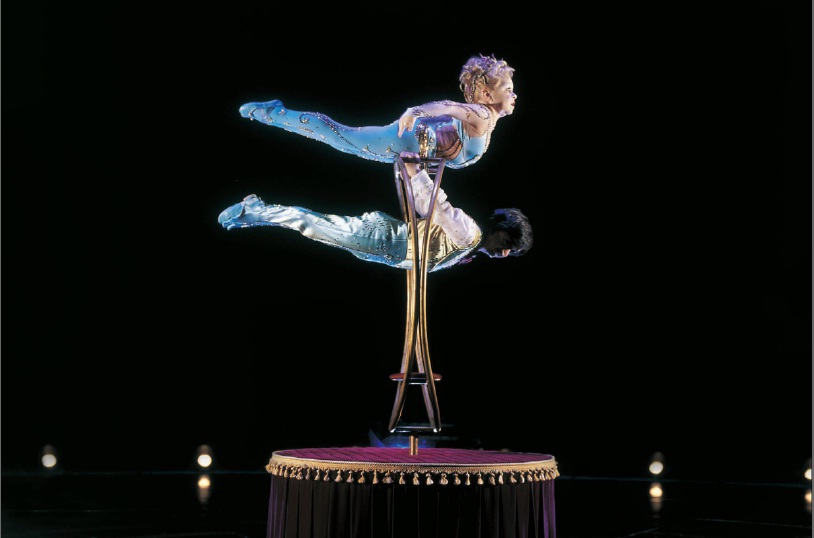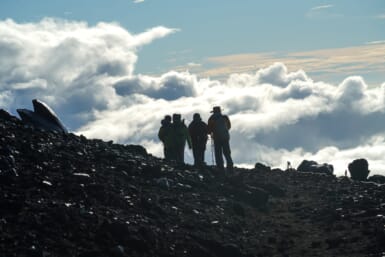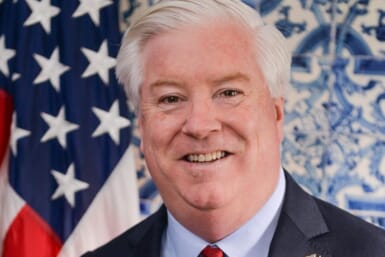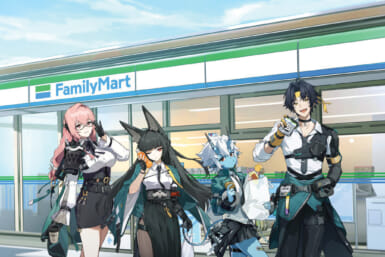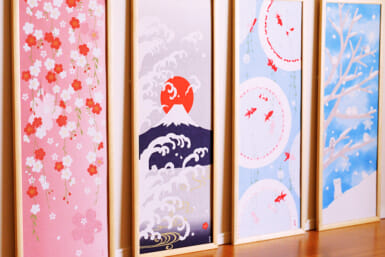by Danielle Tate-Stratton
The shows of Cirque du Soleil, at first glance, involve a lot of things; extraordinary displays of physical ability, live musicians who tweak their music to match the moves of the artists exactly, exquisite costumes, and Loosely portrayed narratives that enhance the stories woven in this world-within-a-world. The story of the company is also about the rise of a young man from rural Quebec, who learned circus arts in a park in France and then came back to Canada to launch one of its most famous exports in recent memory, now in its 25th year.
All of it is about imagining the impossible and making it real, about thrilling audiences around the world, and about changing lives. It is also about Love. Love for the company from its employees, love between the artists themselves, and between the artists and their fans. It may not be the first thing you think about when you step into the big top, but love courses through this company. That is something I had the opportunity to witness firsthand while watching and talking to the people that Cirque pulls together, from its roots in Quebec to Corteo, the traveling show currently in Yoyogi Park.
Even after simply watching the show, you may find yourself part of the love affair, developing an affection of your own for the artists and their acts. This happened, instantly and inextricably, to me on my first introduction to Cirque du Soleil, watching a DVD of Alegria in grade eight French class (likely the only time I paid full attention all year). Since then, I’ve dreamed of running away to join the circus, of dusting off an admittedly minimal gymnastics background, sliding into one of the costumes (that can have up to 2,000 hand-glued sequins each), and of beginning my new life under the big top. In short, I am deeply in love with this company, as are many of its employees.
For instance, there is the veritable love story between Gerard Theoret, artistic director, and the entire company. After seeing Mystere in Las Vegas in 1996, Gerard recalls being “blown over and blown away,” and immediately called the company to see if there could be a place for him anywhere in the company. A dancer at the time, Gerard initially auditioned to be an artist, but when an appropriate role didn’t come up he continued to work as tour director for the Phantom of the Opera touring show, among other projects. Four years later,
he was invited to interview for a talent scout position, but with just two candidates left he withdrew himself from the running. As with so many great romances, the timing just wasn’t right at that moment. A new job, new house, romance (of the more conventional type), and move to the US all conspired against him. However, in 2007 fate threw him another chance when, immediately after taking a leave of absence from his then-job, Cirque du Soleil called and offered him his current role with Corteo.
Even now, Gerard seems to be just as enthralled with the shows he was first introduced to so many years ago despite the fact his job now entails watching each and every performance the 70 artists of Corteo put on; ten a week while in Japan. When I ask if he gets bored of watching them, the answer is quick and decisive: “No, never!” This is the love that carries him through the grind of weekly reports back to International Headquarters in Montreal as well as his scheduling job of mammoth proportion. With eighteen acts performed each night (out of a possible twenty), cast members who average two roles each and do one role eight times in a week and the other twice (reversing the next week); Gerard’s job of working out who needs to be where, wearing what, and at what time is a confusing proposition to write about, never mind undertake. Yet he continues to love life with the tour, summing it up by explaining: “I am a gypsy. I love to travel, to discover…”
Then there is the love story of Duke and Tacia Van Vleet, two Cirque performers who love not only the show they are a part of, but also each other. While some artists do find love while on tour, Duke and Tacia met long before they ever stepped foot under the big top. Both were competitive gymnasts and trained in the same gym during their pre-teen years in their native Hawaii. Tacia’s dad happened to be Duke’s coach and, so even when Duke’s family Left for mainland America during his early teens, and while the two sets of parents kept in contact it was 11 years before Tacia got back in touch via email. One thing led to another and soon the pair was dating, then married. There followed a move back to Penn State (his alma mater), where Duke began to coach his old NCAA gymnastics team. Though he had auditioned with Cirque du Soleil, Duke had, “just told my father that I was giving up on the dream of entertainment and planning to make a life of coaching, which
I really enjoyed, when a week later, Cirque du Soleil called.”‘ So off he went, taking Tacia along as a traveling spouse. Her resulting familiarity with the show would be crucial just over a month later when Tacia was asked, on two-days’ notice, to step into a role on tour. Initially brought on for a one city ‘temp’ role, she completed eight months on the tour before being sent to Montreal for further training and a permanent contract upon her return. Perhaps not the most direct route to traveling the world with your soul mate doing the job you both love, but it is evident the obstacles haven’t dampened their love for each other or for the show.
In fact, the longer they stay in it, the more both seem to feel their connection to the show growing. Says Duke, “Cirque does change you. Now I consider myself and my wife artists. You don’t just work. When you’re here, you’re doing what’s better for you and the audience. If it was just a job, it would get boring, but trying to grow and make the show better, that makes it more fun. The show is bigger than us. We change people’s lives for two-and-a half hours a day.”
Those people, the fans of the show, are the main players in a third major love affair. The love of thousands of fans all around the world keeps this big top standing, literally. As with the best relationships, this one is mutual and enpowering — fans and artists both give and take from each other and, in some ways, each makes the other better. For Tacia, there is definitely something to be taken from the audience: “It’s not the noise that they’re making. It’s the look on their face that you learn to appreciate.”
Here in Japan, Duke and Tacia are adjusting to—and appreciating—a slightly different type of fan to those typical in North America. Says Tacia, “In Japan, they’re more polite. They’re not clapping because they’re not enjoying it. They try and Let us do what we want to do with the least amount of distraction…but they’re just as in to it—you look at the faces and see a lot of amazement. They’re really there to experience everything. They’re open to the experience.” However, as this local audience isn’t as Likely to laugh at a punch line as their North American counterparts, sometimes the artists and crew are left to wonder if it is simply quiet politeness or a joke falling flat in a different culture.
And so, like any good, devoted partner, Corteo is making adjustments to smooth the way. Since this show, more than any other in Cirque du Soleils repertoire, relies on a storyline, a certain amount of localization’ has been required. As Gerard explains, the show worked with its creator, Daniele Finzi Pasca, as well as a translator, turning key jokes and narratives into Japanese. They’ve even tailor-made a role for one native Japanese acrobat that gives him a small speaking role, helping along the plot and keeping the Japanese audience engaged in the story.
That is the beauty of Cirque du Soleil; an ability to genuinely engage with the lives of the people that come into contact with it; whether for an all-too-brief evening or a lifetime love affair, overcoming, language, distance, and so many of those other obstacles fate sometimes throws in the way.

